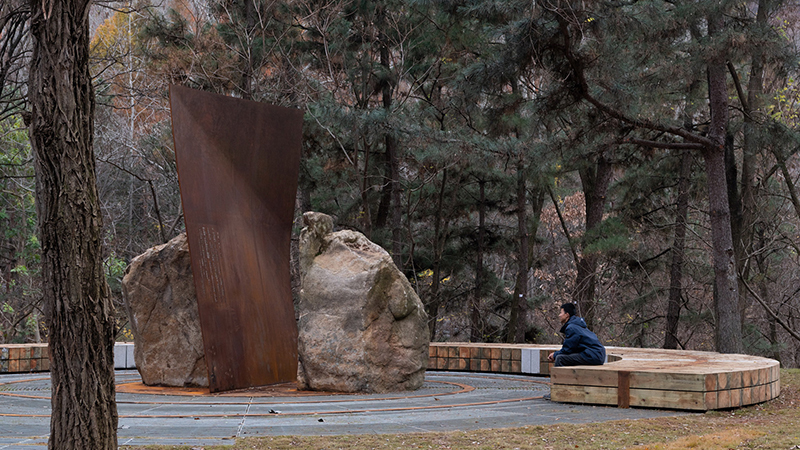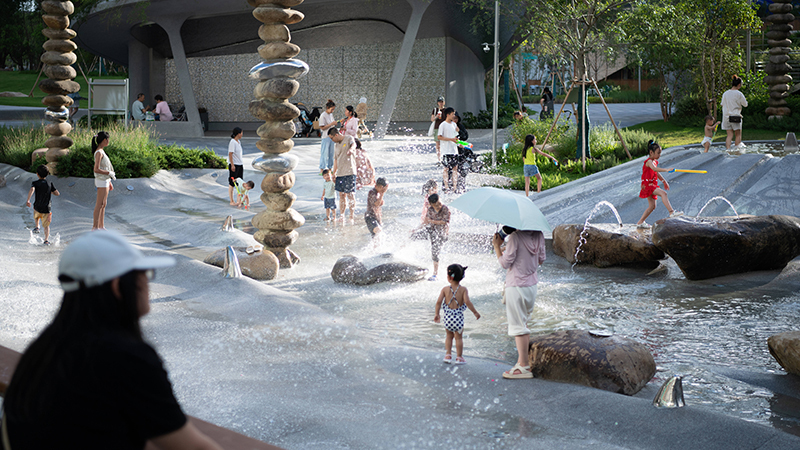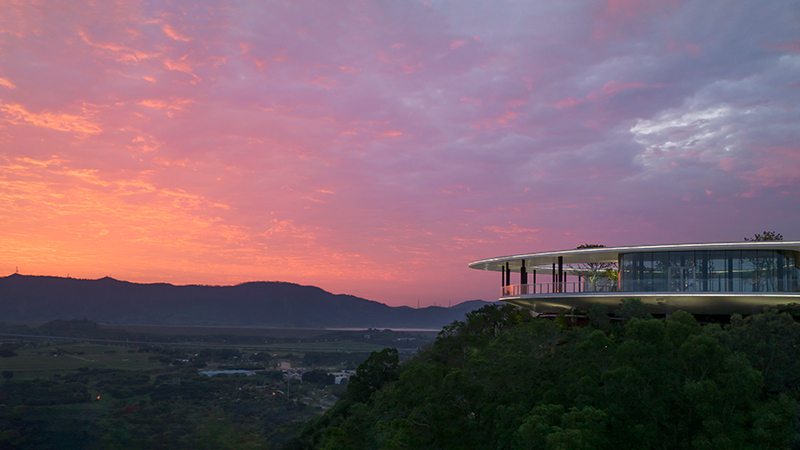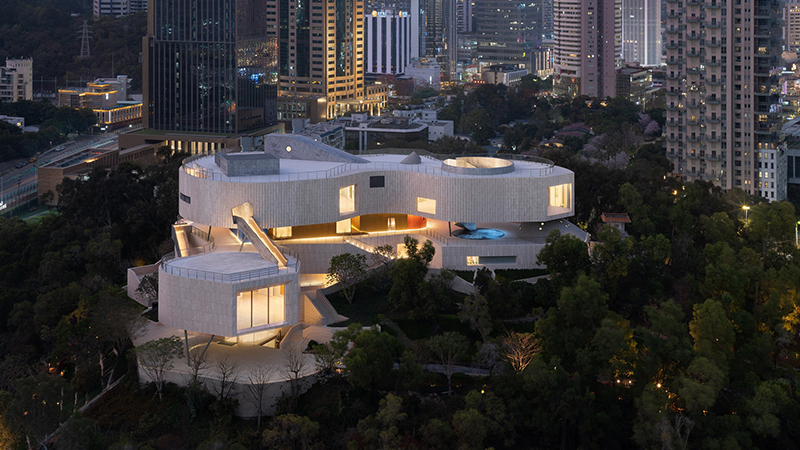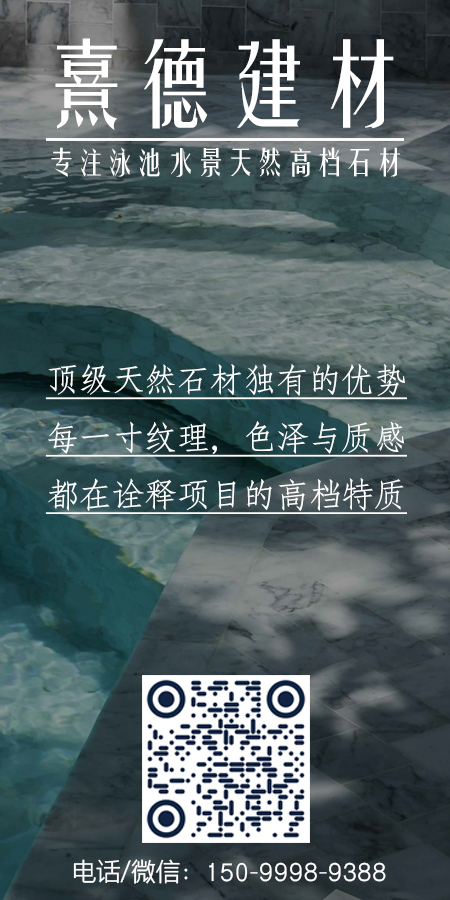近期,昆嵛山国家级自然保护区自然中心投入试运营,受到广大市民的关注与热情回应。自然中心前身是一处老旧科研站点,设计初期,我们提出将其升级为一个兼具科研与自然教育功能的科普平台,并提出构建“自然中心”的设想。在与业主的通力合作与耐心打磨下,这座自然中心历时五年终于落成并投入使用!场地内的建筑与景观协同设计、相辅相成,致力于提升整体运营的生态性与可持续性。(本项目的景观设计与建筑设计,皆由大小景观团队完成。)
Recently, the Nature Center at the Kunyu Mountain National Nature Reserve officially entered trial operation, drawing enthusiastic attention and positive feedback from the public.The center was transformed from an aging research facility located within the reserve. At the outset of the design process, we proposed upgrading the site into a science education hub that would combine research and environmental outreach—introducing, for the first time, the concept of a “nature center” within the reserve.After more than five years of close collaboration and careful refinement with the client, the Nature Center is finally complete and open to the public. The architecture and landscape were designed in tandem, complementing each other to enhance the ecological performance and long-term sustainability of the site. (Both the architectural and landscape designs were undertaken by Atelier Scale.)
▽即将开放的自然中心前庭后院的春夏秋冬 (2024年)
整个自然中心由两大部分构成:科普院落与自然客厅。科普院落在原有两排仓库的基础上改建而成,配备有自然工坊、自然展厅、“但留书屋”等多样化的科普与休闲空间。自然客厅则是一片视野开阔的景观活动区,设有活动草坪、季节溪谷(由原本的混凝土暗渠改造而成)、望山甲板,可承载休憩、玩耍、观景以及各类自然科普活动。
The Nature Center is composed of two main sections: the Science Courtyard and the Nature Living Room. The Science Courtyard was transformed from two original warehouse buildings and now houses a variety of educational and leisure spaces, including the Nature Workshop, Nature Exhibition Hall, and the Danliu Book Room. The Nature Living Room is an open landscape activity zone featuring a recreation lawn, a seasonal stream (converted from a former concrete culvert), and a Mountain Viewing Deck. It is designed to accommodate rest, play, sightseeing, and a range of nature-based educational activities.
▽迎来开放日的自然中心
▽自然中心之“但留书屋”
自然中心的投入使用,标志着保护区配套服务设施进入到相对成熟和完善的阶段。回顾过往,不禁令人感慨——我们在昆嵛山保护区开展生态设计实践,已经走过整整十年。而这条探索与成长的道路,竟是从一座厕所开始的。那是一次看似微小却意义非凡的尝试。从此,昆嵛山的游客除了被壮美的山林风光所震撼,也常常在某个不经意的时刻,被一座座“好看的厕所”吸引,停下脚步,驻足欣赏。作为设计者,这样的瞬间让我们深感欣慰。
The opening of the Nature Center marks a significant step in the maturation and improvement of service facilities within the nature reserve. Looking back, it's hard not to feel a deep sense of reflection—our journey of ecological design in the Kunyu Mountain Reserve has now spanned a full decade. And remarkably, this path of exploration and growth began with something as humble as a toilet. What seemed like a small intervention at the time turned out to be a meaningful and symbolic first step. Over the years, visitors to Kunyu Mountain have not only been awed by its majestic forested landscapes, but have also—often unexpectedly—found themselves pausing to admire a “beautiful public toilet.” As designers, those quiet moments of recognition bring us a deep sense of fulfillment.
点缀在保护区不同位置上的厕所被被精心镶嵌于自然之中:花海上的“山之厕”、跨溪流的“谷之厕”、藏林间的“林之厕”,临河谷的“水之厕”,这些厕所不只提供了优雅如厕的体验,更意外地成为了保护区风景中的一部分。
Scattered across the reserve, these restrooms are carefully embedded in nature: the Restroom of the Mountain nestled in a sea of flowers, the Restroom of the Valley straddling a stream, the Restroom of the Forest hidden among trees. These facilities don’t just provide a pleasant restroom experience—they’ve quietly become part of the landscape.
▽已建成的山之厕所系列:a山之厕;b 林之厕;c 谷之厕;d 水之厕;e 坡之厕;f 夕之厕
▽浪漫山野的花海“山之厕“
▽跨溪流的“谷之厕”
▽河谷之上的“水之厕”
▽藏林间的“林之厕”
除了厕所,保护区中的电瓶车站、观景平台、取水点等似乎都似曾相识,仿佛在那里见过,又仿佛和见过的不太一样。的确,这种独特又统一的“昆嵛系”风格,已然在这里逐渐形成了。
And it’s not just the restrooms. Electric shuttle stops, viewing platforms, and water points all seem vaguely familiar yet refreshingly different. A unique yet cohesive "Kunyu aesthetic" has quietly emerged.
在大小景观与昆嵛山保护区的合作十余年间,那些藏在山林间的基础设施,正在以一种润物细无声的速度逐渐长成了一棵“风景的大树”。这篇文章,就是我们对这段实践的一次阶段性小结与分享。
Over a decade of collaboration between Atelier Scale and the Kunyu Mountain Reserve, these small infrastructure pieces hidden among the trees have grown—quietly but steadily—into a great "tree of scenery." This article is a mid-journey reflection and summary of that ongoing story.
▽已建成的“昆嵛系”观景设施系列:a牛涧站;b 昆嵛镇站;c 无染寺岗亭;d 红松林站;e 花海站;f 取水点盒子
▽屋檐起伏的“森之车站”
▽“临崖”观景台
▽森林盒子之取水点
▽“框悠”观景台
02 一粒厕所的种子:“山之厕”的实验
02 The Seed: Restroom of the Mountain as a Testing Ground
2014年,昆嵛山国家森林公园启动基础设施升级,管委会邀请我们设计一座“示范厕所”——这就是那个不起眼,却又充满挑战的起点。
In 2014, the reserve began upgrading its infrastructure. We were invited to design a "model restroom"—a small and humble start, yet a meaningful challenge.
在这片生态敏感区,设计需要谨慎落笔。起初没有确定选址,我们便从山林中出发:深入场地、观察地形、理解气候与生态,我们遵循“最低干预开发(LID)”原则,提出了一个“可生长”的模块系统:可组合、可变化,适应山体斜坡的多种地形。
In this ecologically sensitive zone, design had to tread lightly. With no fixed site at first, we began in the forest—surveying terrain, observing the climate, understanding the ecology. Following the principles of Low Impact Development (LID), we proposed a “growable” modular system: combinable, adaptable, able to conform to various slopes.
▽高适应性的模块组合概念示意图
▽已建成基础设施模块汇总轴承图
最终,第一座试点选在高山植物园中一块最大高差近4米的土台地。视野极佳,也最能检验系统的“变形能力”。我们用模块组合创造出依山就势、层次丰富的庭院空间:有观景平台,也有静谧中庭;功能区与休息区环绕而设,动线清晰、体验流畅。一座厕所,成了旅途中的短暂停留的场所,也成了山林中的一个风景节点,这便是播下的那粒“种子”。
The first site chosen was a terraced spot in the Alpine Botanical Garden, with a 4-meter elevation difference—perfect for testing the system’s flexibility. Using modular components, we created a tiered courtyard that followed the contours of the land: with a viewing platform and a quiet central garden; rest areas and functional zones arranged in a fluid, intuitive sequence. This wasn't just a restroom—it was a scenic stopover in the journey, and the seed we planted.
▽还未成景的高山植物园角禺边坡
▽初代“山之厕”的生成示意图
▽“山之厕”的平面与布局图
▽成景之后的高山植物园花海与“山之厕”
▽“山之厕”春
▽“山之厕”夏
▽“山之厕”秋
▽“山之厕”冬
03 生长的风景:“谷之厕”、“林之厕”与“水之厕”
03 Growing Landscapes: Restroom of the Creek ,Restroom of the Forest and Restroom of the Water
“山之厕”这粒种子播下后,不久便在这片充满生机的山林中发芽并快速生长。我们延续模块系统,探索了两种全新场景下的应用:
After planting the seed with Restroom of the Mountain, it soon sprouted in the reserve's vibrant landscape. We continued developing the modular system in two new settings:
谷之厕:穿溪而过,走入庭院
Restroom of the Creek: Crossing a stream into a courtyard
位于山脚坡地,“谷之厕”原场地有一道混凝土排水沟。我们将其拆除,还原成一条季节性溪谷,并设计了一座栈桥,让如厕前的路径拥有“进入”与“转换”的仪式感。
Located on a hillside at the foot of the mountain, this site originally featured a concrete drainage channel. We removed it and restored the seasonal stream, adding a wooden bridge to give the approach a sense of ritual—of “entering” and “transition.”
厕所建于溪谷之上,是一座“立体庭院”。观景平台、乔木空间、上下起伏的厕所体块,共同营造出一个嵌入自然、充满细节的公共设施。
The restroom itself is a “vertical courtyard” above the stream. Viewing decks, trees, and multi-level restroom units form a richly textured public space embedded in nature.
▽谷之厕轴侧图
▽架设于溪流之上的谷之厕
林之厕:藏在树林里的“小院子”
Restroom of the Forest: A hidden little yard beneath the trees
在仙女池景点,我们用5个厕所模块,避树布置于林下斜坡。因地制宜,将厕所隐入林中——雨季汇水从体块间穿行而过,夏日树木郁郁葱葱,秋冬的厕所与林色交融,消隐于山林。
Near the Fairy Pond attraction, five modules were placed on a wooded slope, carefully avoiding existing trees. The layout adapts to the land—during the rainy season, runoff flows between units; in summer, dense foliage provides shade; in fall and winter, the restrooms blend into the seasonal hues of the forest.
▽林之厕轴侧图
▽藏与树林中的小院——林之厕
水之厕:静座水边的“听水台”
Restroom of the Water: Sitting quietly on the "Water Listening Platform" beside the waterway
石门里景区入口的停车场每到节假日人满为患,应需配置厕所又不要过于显眼。我们与客户商议择址于大溪谷下游的水道斜坡上,从停车场步入厕所,逐级下沉到贴近溪流的平台,听闻水声,暗示着由此离开闹热的城市,进入到自然的境地。
The parking lot at the entrance of the Shimenli Scenic Area is always crowded during holidays. To meet the demand for toilets without making them too conspicuous, we discussed with the client and decided to locate them on the slope of the waterway downstream of Daxi Valley. From the parking lot, one steps into the toilets, gradually descending to a platform close to the stream. The sound of water suggests that one has left the bustling city and entered a natural environment.
▽水之厕轴侧图
▽傍河听水的“水之厕”
厕所系列模块组合带来的适应性,也在细节中持续优化。门框强度、屋面排水、开合逻辑都在不断完善中,真正实现了“因地制宜的系统化”。
The system's adaptability continues to improve through details: doorframe strength, roof drainage, open/close mechanics—all fine-tuned for site-specific optimization.
04 开枝散叶:“森之车站”与“森林盒子”
04 Branching Out: Forest Station and the Forest Box
“山之厕”之后,昆嵛山的公共设施系统不再止步于“如厕”。
游客服务车站、便民设施、护林点、取水点……逐步纳入整个系统,一套更完整的“山林体验配套”逐渐生成并日趋成熟。
With Restroom of the Mountain, Kunyu's infrastructure efforts expanded beyond restrooms.
Shuttle stops, convenience facilities, ranger huts, water access points... a fuller system of “mountain forest experiences” took shape.
森之车站:山林间的候车亭
Forest Station: A waiting pavilion among the trees
借助模块组合与拆分策略,我们为多个景点设计了“森之车站”系列。根据人流、地形,区分出休息区、候车区、遮蔽平台,构建出节奏感强、功能分明、自然融入的交通节点。屋檐的起伏呼应了“山之厕”的设计语言,构成统一的视觉体系。
Using the same modular logic, we designed a series of “Forest Stations” at different attractions. Each is customized according to terrain and foot traffic—separating waiting, resting, and sheltered areas into rhythmically composed, clearly functional, and naturally integrated transit hubs. Their roofs echo the form language of the original restroom, maintaining a coherent visual identity.
▽已建成森之车站系列轴侧图
▽森之车站位于花海与红松林站点的集中式布置
▽位于牛涧车站的院落分散式候车点及其与之连通的古银杏剧场
▽很好的兼顾了车行流线与人行友好的候车动线,形体与空间合一的森之车站,自然体验感满满
森林盒子:功能系统的升级进化
Forest Box: Evolving the functional system
为了应对更多样的需求,我们开发了“第三代模块”——森林盒子。
3×3×2.7米,预制成型,竹木饰面,既便于运输安装,也确保了施工精度。单体可独立嵌入林中,也可拼合成更复杂的功能组团:如岗亭、取水点、小卖部、观鸟台等。
To meet expanding needs, we developed a third-generation module: the Forest Box.
Measuring 3×3×2.7 meters, it’s prefabricated with bamboo and wood finishes—easy to transport and assemble, while ensuring construction precision. Each unit can stand alone or combine into clusters for uses like ranger posts, kiosks, water stations, and birdwatching decks.
▽在工厂整体加工预制的森林盒子
▽方便整体吊装,嵌入林中,功能各异的盒子
其中,取水点的设计尤为生动——我们借“水滴石穿”的意象,用穿孔山石作为出水口,将山泉水引至眼前。森林盒子的模块也发挥快速改造的功效,我们将封闭的4面打开2个面,为前来取水的周边居民快速建造出了一座方便进入又能遮风避雨的取水场所。
One highlight is the water station: drawing inspiration from “dripping water wears through stone,” we designed a perforated stone spout to channel mountain spring water, making it visible and touchable. The Forest Box enabled quick modification—we opened two sides of an enclosed unit to create a weather-protected, easily accessible water spot for local residents.
▽取意“滴水穿石”的森林盒子取水点
▽秋色烂漫中的取水盒子
05 每一颗树都不一样
05 Every Tree Is Different
昆嵛山的设计逻辑如同看一片森林:
从远看是整体系统,从近看,每个节点都各有特色。
Designing in Kunyu is like looking at a forest:
From afar, you see a system. Up close, each node is unique.
临崖与框悠:平台也有性格
Cliffside and Framed Serenity: Platforms with Personality
“临崖”与“框悠”是两个极具在地性的观景平台,名字便来自它们所处的山林地貌。
“临崖”位于悬崖之上,原为一座中式六角亭,虽视野开阔,却与环境格格不入。我们以更隐匿的姿态重塑它:平台微探崖线,若隐若现,融入山林,也延续了“昆嵛系”一贯的克制语汇。
“Cliffside” and “Framed Serenity” are two distinctive viewing platforms, named after their topographic settings.
“Cliffside” sits above a steep drop. The original structure—a traditional hexagonal pavilion—offered great views but clashed with the surroundings. We reimagined it with restraint: a subtle platform just beyond the cliff edge, barely visible, harmonized with the forest and aligned with the Kunyu system’s quiet vocabulary.
▽位于临崖原址的混凝土古典范式亭子
▽融入于山林的临崖观景台
▽微探崖线,临崖望景
“框悠”则坐落在一条季节性溪流上。春夏水声潺潺,秋冬斑影流动。我们设计了一座不喧宾夺主的歇脚平台,让人“框中见景,见悠然”——重点不是形式,而是行走其间的感受。
“Framed Serenity” is built over a seasonal stream. In spring and summer, you hear water trickle; in fall and winter, dappled light dances through the trees. We created a modest resting place that frames the view without competing with it—designed not for form, but for the feeling of being there.
▽临溪而座的框悠观景台
▽框中见景,见悠然
王师傅的瞭望塔:为守山人建一座家
Master Wang’s Watchtower: A Home for the Forest Guardians
昆嵛山的护林防火期长达半年,黄连口护林员王师傅与妻子常年驻守,风餐露宿是常态,只因山中无固定瞭望点便于休憩。
Kunyu’s fire prevention season lasts half a year. At the Huangliankou outpost, ranger Wang and his wife live on-site year-round, often outdoors, with no proper lookout for shelter.
我们为他们设计了一座落在山巅裸岩上的小型瞭望塔:3×5米的玻璃盒子,以轻钢结构轻盈架空;一座紧凑的旋转楼梯直通屋顶,获得360度瞭望视野。为了避免施工中使用大型机械,设计采用乐预制装配体系,确保在生态敏感区也能高效、低干预地完成建造。
We designed a small watchtower for them on bare rock at the mountain’s summit: a 3×5 meter glass box, raised on light steel columns. A compact spiral staircase leads to a rooftop with a full 360-degree view. To minimize ecological impact, we used prefabricated modular construction—allowing low-intervention, high-efficiency assembly in this sensitive area.
这不仅是一座功能性建筑,更是设计对一对山林守护者最基本的尊重与致意。
This is more than a building—it’s a gesture of respect for the people who protect the forest.
▽矗立于山巅,轻盈而消隐的瞭望塔盒子
▽安全体面的瞭望塔给护林员王师傅夫妇带去了暖意
06 从一粒种子,长出一棵大树
06 From a Seed to a Tree
我们的设计方式,不是先画一个完美的“规划图”,再层层细化;而是从最小的一个点——一座厕所、一个平台、一个车站出发,通过和场地的对话以及使用者的反馈,逐步生长、完善并最终反哺给系统。
Our design approach doesn't begin with a grand master plan. It begins with one small point—a restroom, a platform, a station—and through dialogue with the site and feedback from users, it grows and gradually gives back to the system.
这是一次十年“自下而上”的实践:从点到线、从线到面;从“被动”的基础设施,慢慢变成了主动“造景”的风景网络。我们相信设计不是挥毫落笔的壮举,而是扎根土壤的细水长流。真正动人的景观设施不应是大开大合地博人眼球,而应是含蓄内敛地打动人心。
This has been a decade-long “bottom-up” process: from point to line, line to surface; from reactive infrastructure to an active landscape network. We believe design isn’t about sweeping gestures—it’s about patient cultivation. The most touching landscapes are not those that clamor for attention, but those that quietly move the heart..
▽刚落成的山之剧场(2024年)
▽投入使用的山之剧场(2025年春)
▽高山植物园观景平台
▽林中小厢
▽省道旁的“森之车站”
07 路透:即将呈现的昆嵛山新自然体验系列
Sneak peek: Upcoming Kunyu Mountain Nature Experience Series
▽自然科普涉水路径
▽豆青湾观景台
▽玩石乐园
▽辛夷林树屋
▽昆嵛幼儿园
致谢:感谢昆嵛山自然保护区的各位工作者对我们的信任,非常荣幸能够遇到与我们一样对大自然保持敬畏之心的自然遗产管理者,向你们致敬。
设计团队:钟惠城、林丙兴、宋妃敏、周世龙、陈志华、张艺斌、王迪、马咏春、颜琴、李青楠、刘瑶瑶、王沚鹭、叶星、陈翔、刘志刚、凌齐美、钟玉娟、郑毅梅
业主方: 昆嵛山国家级自然保护区管理委员会
摄影:Holi景观摄影、鲁冰、陈翔、红角鸮
Design Team: Huicheng Zhong, Bingxing Lin, Feimin Song, Shilong Zhou, Zhihua Chen, Yibin Zhang, Di Wang, Yongchun Ma, Qin Yan, Qingnan Li, Yaoyao Liu,Zilu Wang, Xing Ye, Xiang Chen, Zhigang Liu, Qimei Ling, Yujun Zhong,Yimei Zheng
Client: Management Committee of Kunyu Mountain National Nature Reserve
Photography: Holi Landscape Photography, Lupin, Xiang Chen “Short-eared Owl”
更新日期:2025-08-15 15:54:02
非常感谢 大小景观 带来的精彩项目, 查阅更多Appreciations towards Atelier Scale for sharing wonderful work on hhlloo. Click to see more works!

















































































































